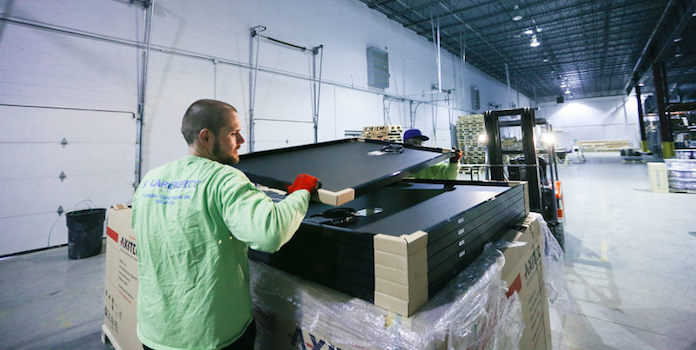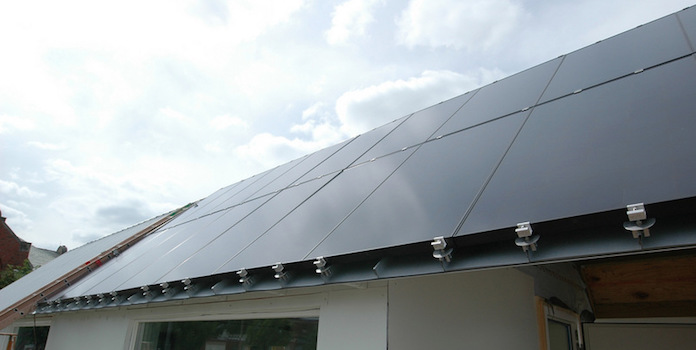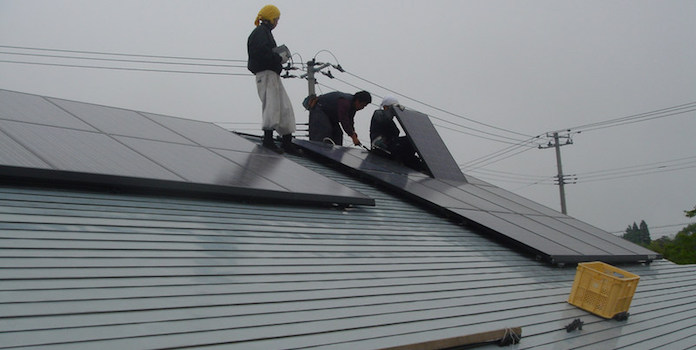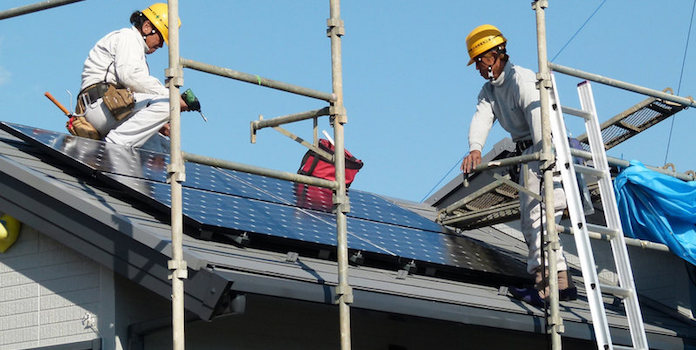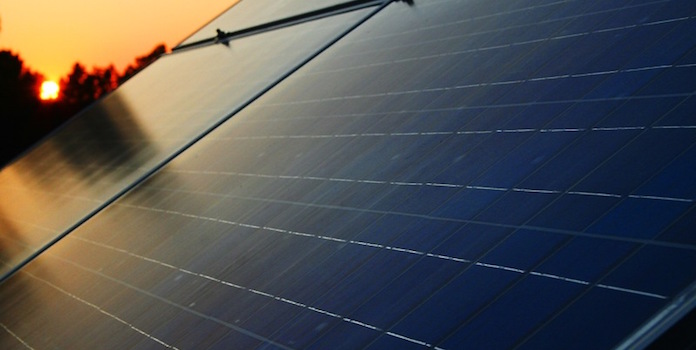What are Good Photovoltaic Panel Prices?
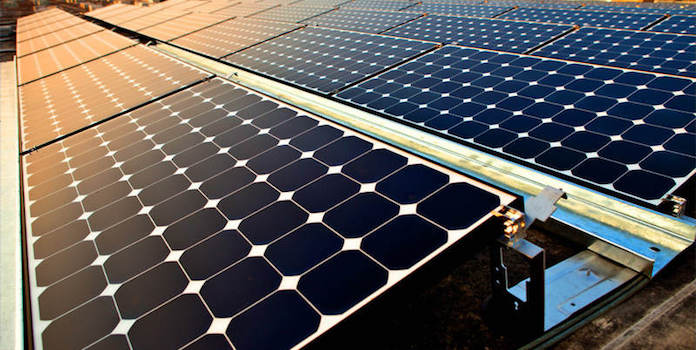
Everything you need to know about photovoltaic panel prices
You’ve probably heard a lot of talk about solar installation costs and how they’re constantly falling, but maybe you’re left wondering how you can tell if you’re getting a good deal. For your panels specifically, how do you know if you’re getting a great bargain? Today, we’re going to find out how much the average panel costs, to help you better understand the entire costs involved in going solar!
We’re going to look at the costs of photovoltaic (PV) solar panels – the solar panels that create electricity from the sun (as opposed to heating water like thermal solar panels). There are many types of photovoltaic panels, but today we are focusing on the most common types installed on home roofs: poly- and monocrystalline PV panels. These panels are efficient, cost-effective and durable, making them perfect for almost any rooftop.
Factors that affect price
Before we take that jump into actual costs, let’s quickly look at factors that affect the price. If you’re scoping out solar panels and want to compare prices, it pays to have an understanding of why some panels are more expensive than others.
Really, the factors are quite simple:
Wattage and efficiency rating
Solar panels produce different amounts of energy, measured in watts (just like a lightbulb, except the lightbulb is measuring how much electricity it consumes, not generates). Residential solar panels are typically around 260 watts (for example, the popular Yingli Solar 60 Cell series, available from 250 watts to 270 watts), though solar panels rated at over 300 watts are available. In general, the higher the wattage, the higher the cost.
There’s not a lot of variety in the physical size of residential solar panels. They’re usually around 3 feet x 5 feet. Having a standard size makes it easier for installers to fit them on the majority of residential roofs (which are much more cramped than the flat, open roofs of commercial buildings).
This means that to increase a solar panel’s wattage, manufacturers must increase the panel’s efficiency. Efficiency is the percentage of sunlight a solar panel receives that it is able to convert into electricity.
Average residential panel efficiency hovers right around 17%, though companies are now pushing as high as 24%. Increasing efficiency is a lot of work and involves vast amounts of research and development. As you can imagine, the higher the efficiency (and therefore wattage), the higher the cost.
In the end, don’t get too bogged down in wattage and efficiency, as cost per watt (see next section below) is much more important!
Warranty
Warranties are an important component when looking at solar panels. Even if your panel could convert 100% of all the sunlight that hits it into electricity, it’s all for naught if the panel breaks after only a few years!
Photovoltaic panel warranties cover two distinct attributes. First, there’s an equipment warranty similar to any other product, promising that the panel will do what it should for a certain number of years. These warranties are typically for 10 to 15 years.
Next, there’s a production guarantee promising that the panel will produce X amount of electricity by Y year (typically something like 80% of its nameplate wattage during the 20th year).
Together, these warranties give you peace of mind that your panels will do what they are supposed to do for a long time. However, warranty periods and production guarantees vary greatly from one manufacturer to the next, with well-respected companies typically offering longer warranties. It’s up to you to know what your panel warranty is.
Generally speaking, the more you spend, the better the warranty.
Manufacturer
Just like cars, some panel manufacturers are cheap and some are expensive. Obviously, some manufacturers will offer higher efficiency, better warranties, or more options (black panels vs silver), but are you willing to spend a premium just because it’s a well-known brand?
You know your own finances and needs better than anyone else, but in most situations, we’re all trying to find a balance between cost and value. Do your research and buy what fits your needs the best. For most of us, mid-level panels with decent efficiency and a good warranty do just fine!
Your purchasing method
Where and how you purchase your photovoltaic panels affects the final price as well. Most homeowners simply hire an installer to purchase and install all their equipment. With large installers being able to buy directly from manufacturers, you’re definitely going to get the cheapest panels this way.
If you are purchasing your panels yourself, be prepared to pay more. With the panels passed further down the supply chain, you’ll certainly be paying a premium.
No matter how you purchase your panels, be sure to do some shopping around to find the best deal. Here’s a final hot tip: consider buying in bulk to get a discount – you can save quite a bit!
Solar panel cost per watt
Now that we’ve gone over what affects solar panel prices, let’s dig into solar panel costs! Just to reiterate, we’re looking at photovoltaic solar panels (i.e. ones that produce electricity), and more specifically mono- or polycrystalline silicon panels, far and away the most common panels for residential solar installations.
As mentioned, solar panels can have different wattages, so the best way to look at costs is to use dollars per watt. With this measurement, we can compare the cost of solar panels with different wattages and efficiencies to see which are the most cost effective (price comparisons in the next section).
According to the National Renewable Energy Lab’s 2016 benchmark of solar costs, solar panels average $0.64 per watt, with a range of about $0.50 per watt to $0.87 per watt (see page 10 of the report).
Keep in mind these prices are directly from the manufacturers to the ‘first buyers’, i.e. distributors, retailers, and large solar installers. As we’ve mentioned, if you went out and bought solar panels at a store, you’ll likely pay more – homeowners are deeper down the supply chain.
Photovoltaic panels prices (by company)
At $0.64 per watt, an average 260-watt panel then costs about $166 wholesale. If you wanted to buy them yourself, how much would it cost you?
To answer that question, we’ve listed the prices of solar panels from 4 different manufacturers. Note that these are costs to the end-user (i.e. homeowners) – not ‘first buyers’ like distributors or retailers – so costs will be higher.
- Astroenergy 260 watt panel: $200 ($0.77 per watt) as of July 2017
- LG 280 watt panel: $260 ($0.93 per watt) as of July 2017
- SolarWorld 295 watt panel: $300 ($1.02 per watt) as of July 2017
- Panasonic 330 watt panel: $462 ($1.40 per watt) as of July 2017
As you can see, retail prices are around $0.90 to $1.40 per watt – much higher than the direct-from-manufacturer cost of $0.64 we cited above. Obviously, these costs are only from a single site, but it gives you a good idea of what photovoltaic panel prices you should expect to find.
How much does a solar installation cost?
So now you know how much a single solar panel cost, but how much does an entire solar installation’s worth of solar panels cost? Let’s take a look at a few different installation sizes:
- Small Installation (2kW, about 8 panels): $1,280 ($0.64 X 2,000 watts = $1,280)
- Medium Installation (5kW, about 20 panels): $3,200
- Large Installation (10kW, about 40 panels): $6,400
- Extra Large Installation (20kW, about 80 panels): $12,800
For small installations, the total investment for the panels is just over $1,000. The cost though can climb to $13k or more for extremely large residential installations!
Solar panels are just one small part of the total cost for an entire solar installation. Let’s take a look at that next logical question: how much, in total, does a solar installation cost?
You might be very surprised, but the NREL report above found that solar panels actually only account for a scant 22% of the total installation costs. What else are you paying for? Well, there’s other equipment like the inverter and electrical stuff (20% of total cost) and the actual installation labor (10%). A whopping 36% of the total cost goes to sales, overhead, and profit! (p.16 of the report)
All of these costs add up to a total of $2.93 per installed watt. Looking at the same installation sizes as above, we find that total installation costs are:
- Small Installation (2kW, about 8 panels): $5,860 total install cost
- Medium Installation (5kW, about 20 panels): $14,650
- Large Installation (10kW, about 40 panels): $29,300
- Extra Large Installation (20 kW, about 80 panels): $58,600
Your personal cost to install solar depends on your local solar industry, so your costs could be higher or lower than above. These costs also don’t account for the 30% federal tax credit (or any other incentives), so if you purchase your installation in cash or through a loan, you stand to drop your total install cost considerably! Be sure to check out our city and state guides to going solar for more specific estimates.
How much should you pay for panels?
Now we come to that all important question: how much should you pay for solar panels?
To be absolutely clear, most homeowners don’t really get to decide what panels they install on their roof. Instead, their installer will likely have 1 to 3 options (standard option, premium option, and maybe a ‘special’ option for areas with heavy snow or unique circumstances) based on what’s available at the time.
For 90% of people and situations, the standard option will be fine. If you look at your solar contract and see that your solar panels account for much more than 22% of your total cost, that could be a red flag – be sure to ask a few questions! It could be a bad thing (overcharging you) or it could be a great thing (their other costs like overhead, marketing, and sales are lower than most).
If you’re buying solar panels yourself, be sure to compare dollar per watt cost as well as the warranty. A retail price of $0.90 to $1 per watt seems like a fairly average retail price for well known, respected companies. Be wary of any panels that are extremely cheap, and at the same time really assess whether you need the absolute most expensive panels as well. Again, for most of us with ample roof space, those standard options work great!
Image Credits under CC License via Flickr – 1, 2, 3, 4, 5, 6

